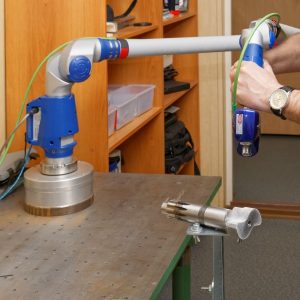3D scanning is all about capturing real-world data and converting it into a 3D model. Until recently, 3D scanners were mainly used for industrial applications. 3D printing is becoming more common, especially for hobbyists, and the demand for 3D scanning devices that can transform real objects into 3D printable models is growing.
A 3D scanner is a device that analyzes data, and captures the geometry and colors of a physical object to transform them into digital 3D renderings. The scanning process collects sample points from the surface of the object, and then generates its geometric shape through extrapolation. There are a wide array of 3D scanning technologies, and each one comes with it’s own advantages, limitations and costs.
From concept through manufacturing, all phases of product design can benefit from combining 3D scanning and printing. By doing so, the number of design changes, and the time between each can be reduced, which in turn can lower the total cost of each prototype.
At Universe Optics, we will work alongside your team of developers to design and manufacture the precision lens required for your 3D scanning equipment.
3D scanners can be divided into two categories, each are relevant to different types of applications and types of scanners.
Scan for Color:
Whether you are scanning a part for educational, medical purposes, or for prototyping, you can use a 3D scanner to digitize the object’s colors and shape, and then print it using a color 3D printer. The end result will have the same geometry and color as the original, and give you the ability to print additional copies.
Scan for Inspection:
Scanning parts for inspection allows you to find defects in the surface finish, or compare printing results with the original CAD file. In either case, you will have to scan objects at a high resolution.
Scanners can image the inside surface of pipes, map out mineshafts and subterranean caverns, or even scan entire build sites for large structures, using laser tools similar to RADAR called LiDAR. Such systems are used to map mining operations to calculate ore removal, or in surveying to create digital terrain maps.
Optical scanning captures only the outer shape of an object, but using ultrasound imaging, or CT scan data, it is possible to create models of internal structures as well. Recently, researchers have created a model of the first exposed full skeleton of a living animal by 3D-printing the bone structure taken from a CT scan of the creature.
Similar data is being used to reconstruct the facial features of mummified remains in Egypt, and of the newly discovered remains of King Richard III. Using CT scans and a stereolithographic system, researchers at the University of Dundee were able to print King Richard III’s skull into solid form, re-creating what this long-dead former monarch looked like in life.
With the technology of 3D scanning and printing, almost anything can be printed, provided there is a 3D likeness available. With a 3D scan and the right printer, it is possible to reproduce any object, at any size – from a skyscraper to an earring.